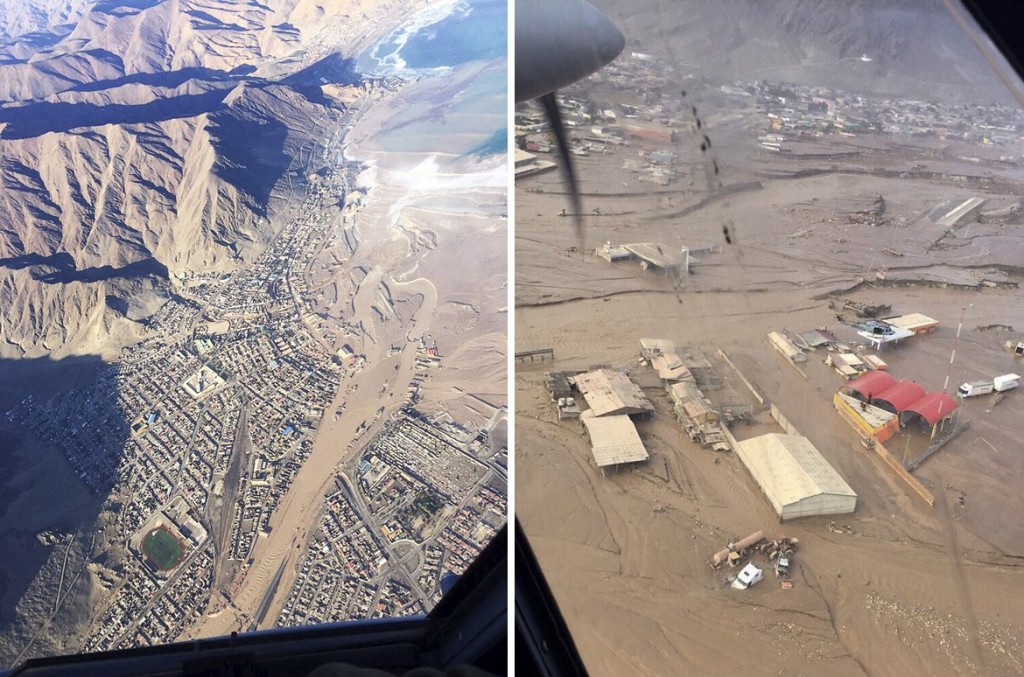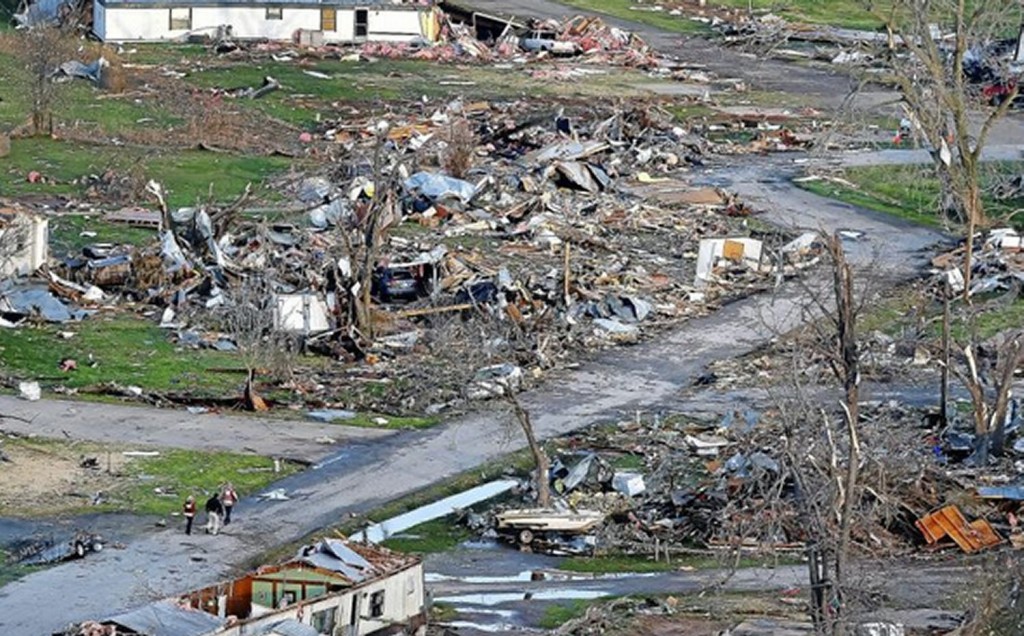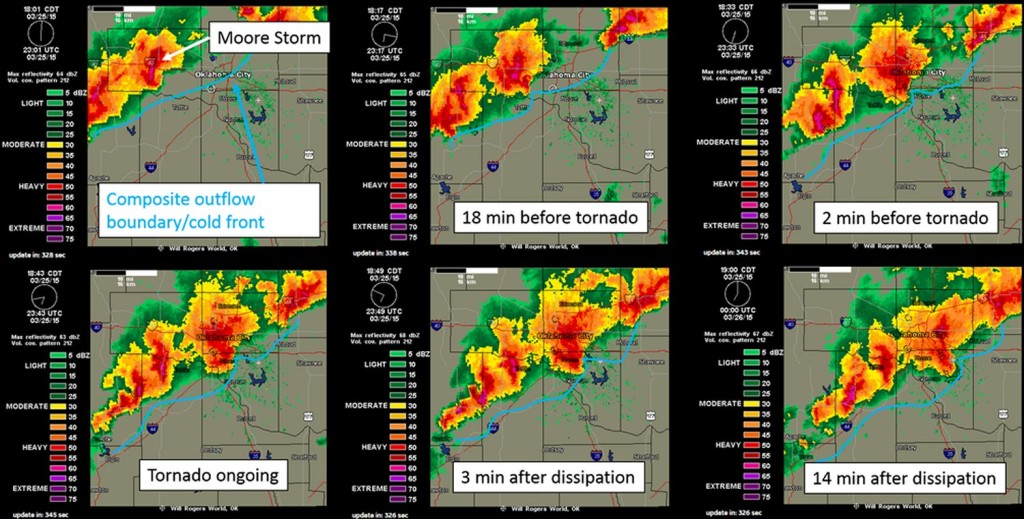Severe Weather Outbreak Strikes Plains and Midwest
As April rolls around the severe weather season in the United States is on an uptick, and with that comes a higher threat for tornadoes. The latest severe weather outbreak occurred Wednesday and Thursday of this past week and hit hardest a few small communities of northern Illinois.
[map autofit=”1″ disable_scrollwheel=”1″] [pin]Medicine Lodge, Kansas[/pin] [pin]Fairdale, Illinois[/pin] [/map]The setup on Wednesday was a fairly typical setup that you would see for a Southern Plains outbreak – surface low in central Kansas with sharp warm front extending eastwards and dryline extending southwards. This, combined with an upper-level trough moving in aloft, destabilized the environment sufficiently for supercells. Only a few tornadoes were observed on Wednesday, with most spotted just west of Wichita (including a large cone tornado near Medicine Lodge) and one unconfirmed in western Oklahoma. No damage was reported as tornadoes mainly touched down in open areas.
Thursday was a different story however, as the system progressed eastwards. The main risk for the day zeroed in to an area near the triple point where both CAPE and shear values were high and surface winds were slightly more backed compared to further south along the cold front. Once again, supercells were triggered in the early evening hours – this time in northern Illinois. One supercell near the triple point stood out from the others however; there no other cells to its southeast to inhibit growth and it latched along the warm front. What came of this supercell was a long tracked tornado that was on the ground for an estimated 25-35km and measured just less than a kilometre in width. It tore through mostly rural area and outskirts of two other towns before striking the town of Fairdale, Ill, which sustained heavy damage from the twister. On Friday, National Weather Service teams were out to examine the damage and gave it a preliminary rating of EF-4 (winds of about 315km/h). Two people were killed and a dozen more injured by the tornado. Cleanup is currently underway in the town as calmer weather sets in for the weekend.








